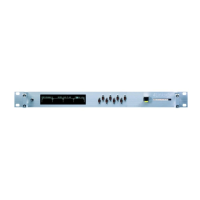Page 41
The read program has many other optional parameters that may be provided after the filename of the
recorded file:
java -jar read.jar <filename> [options]
The read program’s optional parameters are listed here:
The largest block of data printed without allowing data from another flow to
be printed. Packets smaller than this value will be printed, as far as possible, in
a single block of data.
The default is 2048 bytes per block.
Fixed spacing output (may be better for automatic searching). The default is
variable spacing (additional spaces between sets of 4 and sets of 16 bytes for
easier reading).
Use <string> as the prefix for all of the hexadecimal output
values. The default is to supply no prefix.
How many data bytes are shown on one line. To fit a whole packet on one
line, set this value to the packet size, or larger. A negative value (or just ’-’)
reports EOP/EEP on the last (or only) line of data, instead of a line of its own;
The default is 16 bytes per line.
Label the ports with substrings of <string>.
Direct the result to the file <filename>.
The default is to display the result on the screen.
Select data only from the specified (incoming) connectors. e.g. /c 2 extracts only
data flowing from connector 2 to connector 1.
The default is all connectors (12345678).
Add a recognizer for <protocol>.
Like /p but also display the packet content as bytes.
Reverse the flow indicator to display as: 1-->2 and 2-->1.
The default matches the front panel display: 1-->2 and 1<--
2.
Summarise the data: The first <n> data bytes and the total number of bytes in
the packet are shown. If <n> is 0 (which is the default), all of the data bytes are
displayed.
Verbose display of recorded tine tags.
Machine processing: time in ns, fixed spacing for data.
Produces very short output, intended for further machine processing. This feature
is experimental, and the output format might be changed in future releases.

